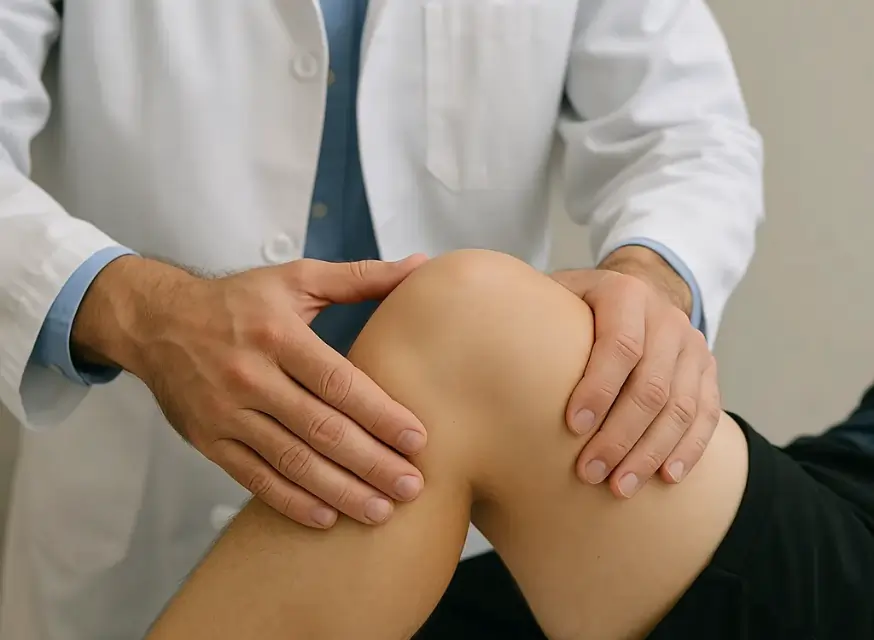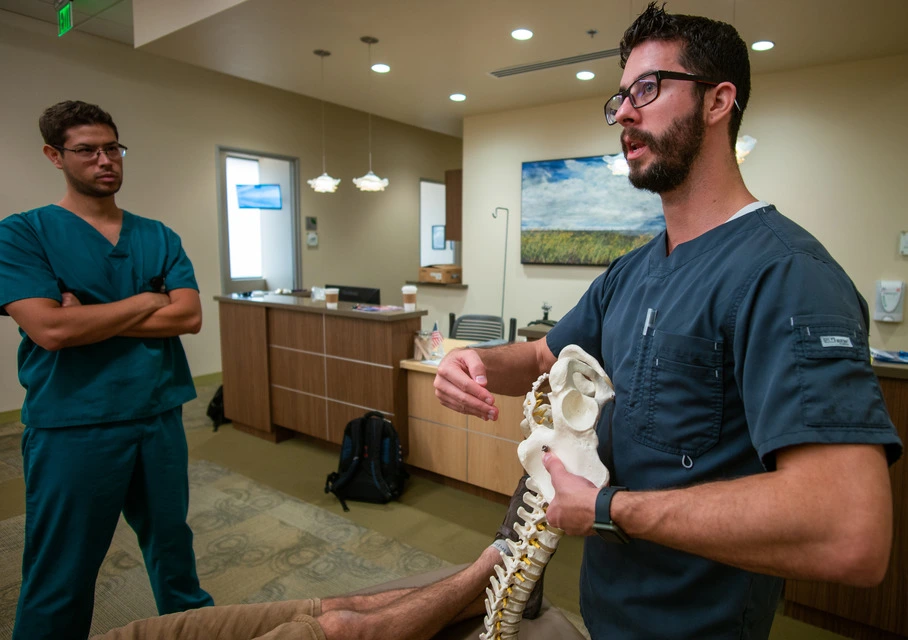Platelet-Rich Plasma (PRP) Therapy at Regenerative Performance
At Regenerative Performance, Platelet-Rich Plasma (PRP) therapy is one of the foundational tools we use to help patients recover from orthopedic injuries and chronic pain, without cortisone or surgery. Supported by a growing body of research and clinical success, PRP injections use your body’s own platelets to stimulate natural healing in damaged tissues such as tendons, ligaments, joints, and nerves.
Whether you’re recovering from a sports injury, dealing with chronic orthopedic pain like osteoarthritis, or trying to avoid invasive surgery, PRP may be the solution you be looking for to help you move, feel, and live better.
What is Platelet-Rich Plasma?
PRP is a concentrated solution of platelets derived from your own blood, which contain a wide range of growth factors and signaling molecules. While platelets are best known for their ability to help with clotting after an injury, the growth factors found in PRP also stimulate healing, reduce inflammation, and encourage tissue repair.
When injected into damaged or inflamed tissues, these platelets release growth factors and cytokines that stimulate collagen production for stronger tissues, support new blood vessel growth to deliver more blood to the injured area, modulate inflammation to reduce pain, and recruit your own stem cells to the area to assist in tissue repair. Taken together, these result in a more natural, biologically-driven healing response, rather than just masking symptoms.
Are All PRP Treatments the Same?
No, not all PRP treatments are created equal. The effectiveness of PRP therapy depends heavily on three key factors: accurate diagnosis of the root cause of your pain, precise delivery with ultrasound and/or X-ray guidance, and the concentration and total dose of injected PRP. At Regenerative Performance, we go beyond the basics to ensure you’re receiving the highest level of care.
Before we begin any treatment, we perform a comprehensive diagnostic workup to determine the true source of your pain. Musculoskeletal pain is often multifactorial, and what feels like a joint problem may actually be coming from supporting ligaments, fascia, or nerves. If PRP is not injected into the correct structure that’s causing you pain, even the best preparation won’t deliver the results you deserve.
Once we have a solid understanding of which structures need to be treated to maximize your results, we use ultrasound and/or fluoroscopy (X-ray) to guide every single injection. This ensures the PRP is delivered exactly where it’s needed, whether that’s into a small tear in a ligament, an area of degeneration in a tendon, or around a nerve entrapment. Accurate placement dramatically improves outcomes and minimizes risk compared to palpation (AKA blind) guided injections. Unfortunately, many clinics still perform PRP injections without any imaging, which reduces precision and effectiveness, and increases risk of complications.
The healing potential of PRP also depends on both the platelet concentration and total dose of platelets injected. At Regenerative Performance, we test each sample in-house to confirm platelet count and ensure it meets therapeutic levels supported by current research. This means your treatment is customized, consistent, and biologically optimized, not just a generic spin-and-inject procedure.
Tailoring the Right Type of PRP for You: LP-PRP, LR-PRP, Platelet Poor Plasma, and Platelet Lysate
Just like not all PRP is created equally, different conditions respond better to different formulations. At Regenerative Performance, we go beyond simply concentrating platelets to therapeutic levels. We carefully select the type of PRP that best matches your tissue type, injury, and healing goals. Here’s how we break it down:
Leukocyte-Poor PRP (LP-PRP)

Leukocyte-Rich PRP (LR-PRP)

Platelet-Poor Plasma (PPP)

Platelet Lysate (PL)
Platelet lysate is a special preparation of LP-PRP, where the individual platelets are intentionally destroyed before injection, which releases the growth factors from inside the platelets for immediate bioavailability. Think of PL like an instant release version of PRP, delivering instantaneous growth factors in high concentrations, instead of slow release from the platelets in PRP. This preparation works well for nerve-related conditions such as neurogenic inflammation or nerve entrapment, and may also be better suited for patients who have reacted too strongly to PRP in the past.

What Can Be Treated with PRP Therapy?
- Tendons
- Ligaments
- Joints
- Bones
- Discs
- Nerves
- Muscles
- Fascia
- Knee osteoarthritis
- Rotator cuff tears
- Meniscus tears
- Carpal tunnel syndrome
- Lumbar degenerative disc disease and annular tears
- Gluteal tendinosis
- Medial and lateral epicondylosis (golfers and tennis elbow)
- Plantar fasciitis
Most cases of chronic pain involve a combination of tissues that are contributing to pain. Our diagnostic workup evaluates all of these structures to determine which tissues need to be treated in your specific case. Research shows that the best outcomes are seen when a comprehensive approach is taken, which means that all the structures that are contributing to your pain are treated with PRP.
The Regenerative Performance Approach to PRP
At Regenerative Performance, our approach is evidence-informed, image-guided, and results-focused. What sets us apart:
- Comprehensive Evaluation: Every patient journey begins with a detailed diagnostic workup, including an extensive medical history review, a thorough hands-on physical assessment, and diagnostic imaging, all designed with one goal in mind, to understand the true source of your pain.
- Customized Treatment Plans: We don’t believe in one-size-fits-all protocols. We tailor your PRP treatment based on your injury, health status, and personal goals.
- Image-Guided Injections: Every injection is performed under ultrasound and/or fluoroscopic guidance to ensure precision and improve clinical outcomes, while minimizing risk of complications.
- Adjunctive Support: As part of a comprehensive and holistic approach to chronic pain, we also utilize supplements, peptides, nutrient IVs, and hyperbaric oxygen therapy to help support your body’s ability to heal itself. We incorporate these therapies both before and after procedures to get your body ready for the PRP injection, but also to optimize your outcomes
- Track Record of Success: Dr. Timmermans has been performing regenerative procedures for over a decade and has tracked patient outcomes through DataBiologics since 2021 to ensure continuous improvement and transparency.

Frequently Asked Questions
Why Choose Regenerative Performance for PRP Therapy?
At Regenerative Performance, we specialize in non-surgical solutions for chronic pain and orthopedic injuries, using the latest advancements in regenerative medicine (orthobiologics). Our orthobiologic director, Dr. Drew Timmermans, is RMSK-certified in diagnostic musculoskeletal ultrasound and completed a residency in integrative pain management and regenerative medicine. He practices evidence-informed orthobiologics, which means your care is guided by both the latest research and real-world clinical experience.
We use image-guided injections with ultrasound and/or X-ray (fluoroscopy) depending on the type and location of the injection. This ensures maximum accuracy, safety, and effectiveness—delivering regenerative medicine precisely where your body needs it most.
We take the time to understand the full picture of your health with in-depth diagnostics before recommending any treatment. Every plan is personalized to your unique condition, anatomy, and goals. Dr. Timmermans also trains medical students and residents, helping to shape the next generation of regenerative medicine providers—so you can feel confident knowing you’re in the hands of a trusted leader in the field.
What Should I Expect During my PRP Treatment?
On the day of your procedure, we will draw your blood that will be processed into the PRP preparation that is right you’re your case. The PRP is then injected on the same day back into your painful tissues with ultrasound and/or X-ray guidance. Some procedures take only 30 minutes, but other more complex cases may be longer.
Am I a Candidate for PRP Therapy?
Not everyone is a candidate for PRP injections, and that’s exactly why we start with a thorough evaluation. We won’t rush you into a procedure; we take the time to identify the root cause of your pain and determine whether PRP injections are the best solution for you.
Your overall health, lifestyle, and treatment goals all play an important role in the decision-making process. If you’re not a candidate, we’ll discuss alternative options that are more appropriate for your situation. Our goal is to recommend what’s best for you, not just what’s available.
How Long Does It Take to See Results?
Most patients notice improvements in pain and function within 3-4 weeks after their PRP treatment. Because this therapy works by stimulating your body’s natural healing response, results build gradually, not overnight.
Improvements often continue to progress over time, with many patients experiencing ongoing improvement for 3-6 months. The timeline can vary depending on the area treated, the severity of your condition, and your body’s individual healing response. We’ll be here to support you throughout the process and track your recovery every step of the way.
How Long Do PRP Injections Last?
For orthopedic and sports medicine conditions, PRP therapy often provides long-term pain relief and improved function. While every patient responds differently based on their condition, age, and activity level, many experience benefits that last 18-24 months. This extended period of pain relief occurs because PRP therapy can help stimulate tissue healing, rather than just masking symptoms like cortisone injections.
We’ll monitor your progress closely after treatment and provide guidance on how to support and extend your results through movement, nutrition, and other supportive therapies.
Is PRP Therapy Safe?
When performed by a trained physician using your own PRP and sterile technique, PRP therapy is generally considered safe. As with any medical procedure, there are risks, such as bleeding, infection, or temporary pain at the injection site, but serious complications are rare. We follow strict protocols and sterile technique to maximize safety and minimize risk.
Are PRP Injections Painful?
Most patients tolerate PRP injections very well. You may feel some pressure or brief discomfort during the procedure, especially in sensitive areas, but we take every step to ensure you’re as comfortable as possible.
For those who are anxious about pain or prefer a more relaxed experience, IV anesthesia is available. This allows you to rest comfortably throughout the procedure while we perform your procedure with precision using ultrasound or X-ray guidance. We’ll talk through all your options beforehand, so you feel informed, prepared, and at ease.
Does Insurance Cover PRP Therapy?
In most cases, insurance does not cover regenerative treatments like PRP injections. These therapies are considered elective or investigational by many insurance providers, even though patients often experience significant benefits. We’re happy to provide detailed documentation and receipts you can submit to insurance to seek reimbursement. You can also use your health savings account (HSA). To help make PRP treatments more accessible, we have partnered with Advance Care Card, which you can apply to help finance your treatments.
How Much Does PRP Therapy Cost?
The cost of PRP injections can vary depending on your individual needs, the specific condition being treated, and the complexity of your case. Since every person’s pain and health history is unique, we begin with a thorough diagnostic workup to better understand the root cause of your symptoms. This allows us to create a personalized treatment plan tailored to you, allowing us to give you a clear recommendation along with associated costs. Our goal is to ensure you’re getting the most appropriate and effective care, not just a one-size-fits-all approach.
Disclaimer:
This information is for educational purposes only. PRP injections are considered experimental, and results may vary. These statements have not been evaluated by the FDA, and this treatment is not intended to diagnose, cure, or treat any disease.
Patients Come From These Areas to Our Office
At Regenerative Performance, we’re honored to welcome patients from across the East Valley and surrounding communities who seek high-quality, personalized PRP therapy. Our reputation for advanced treatments and compassionate care draws individuals from a wide range of nearby cities.
We proudly serve patients from:
Whether you’re nearby or coming from a neighboring city, our doors are always open to help you feel your best.
Get started today


